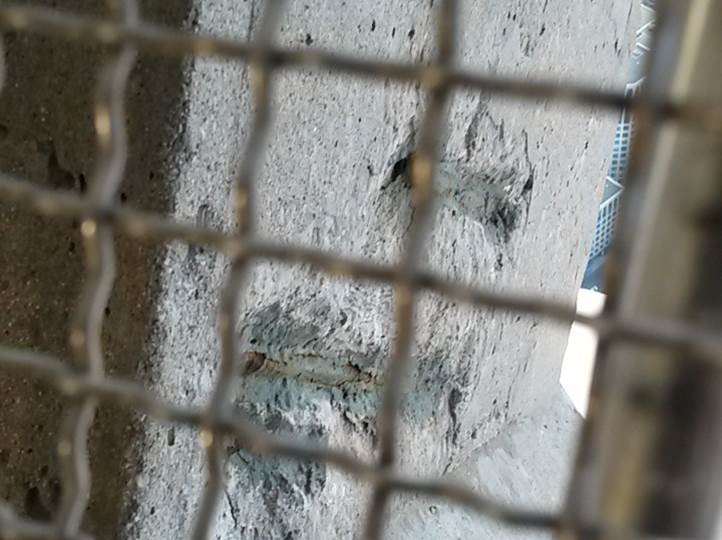As has been discussed a time or two on this very blog, and throughout the concrete industry, corrosion of steel rebar in concrete is a silent killer of concrete structures. But exactly how does this happen?
There are three essential components necessary for corrosion in reinforced concrete: steel, water and oxygen.  Eliminating any one of the above will prevent the oncoming chemical reaction and damages incurred due to corrosion. This is why there is no corrosion in dry concrete; furthermore, this is also why concrete fully submerged in water has limited corrosion – except in instances where the water can entrain air.
Eliminating any one of the above will prevent the oncoming chemical reaction and damages incurred due to corrosion. This is why there is no corrosion in dry concrete; furthermore, this is also why concrete fully submerged in water has limited corrosion – except in instances where the water can entrain air.
Overall, concrete is a great host for the rebar. Due to the high-alkalinity of concrete, the steel reinforcing bars are passivated by an iron oxide film (Fe2O3) that provides a protective layer to the steel. In this state, concrete normally provides reinforcing steel with excellent corrosion protection.
However, while hardening, concrete develops minute pores which become a potential source for the ingress of corrosive agents into the concrete. These corrosive agents, entering into the concrete through the voids, leads to a breakdown of the passive protection layer around the concrete. Without the passive iron oxide film protecting the  steel, corrosion is able to commence at a much higher rate.
steel, corrosion is able to commence at a much higher rate.
The passive layer can also break down over time due to atmospheric carbon dioxide, which, through a process called carbonation, lowers the pH of the concrete until the passive layer becomes unstable. The passive layer can further be rapidly broken down by aggressive chemicals such as chloride, which are present in coastal environments and also used in deicing chemicals. Once the passive layer is compromised, steel reinforcement will corrode if there is moisture and oxygen present at the surface of the steel.
This is just another reason why mitigating the risk of water penetration by using the most reliable concrete waterproofing product is vital to the sustainability of your project.






